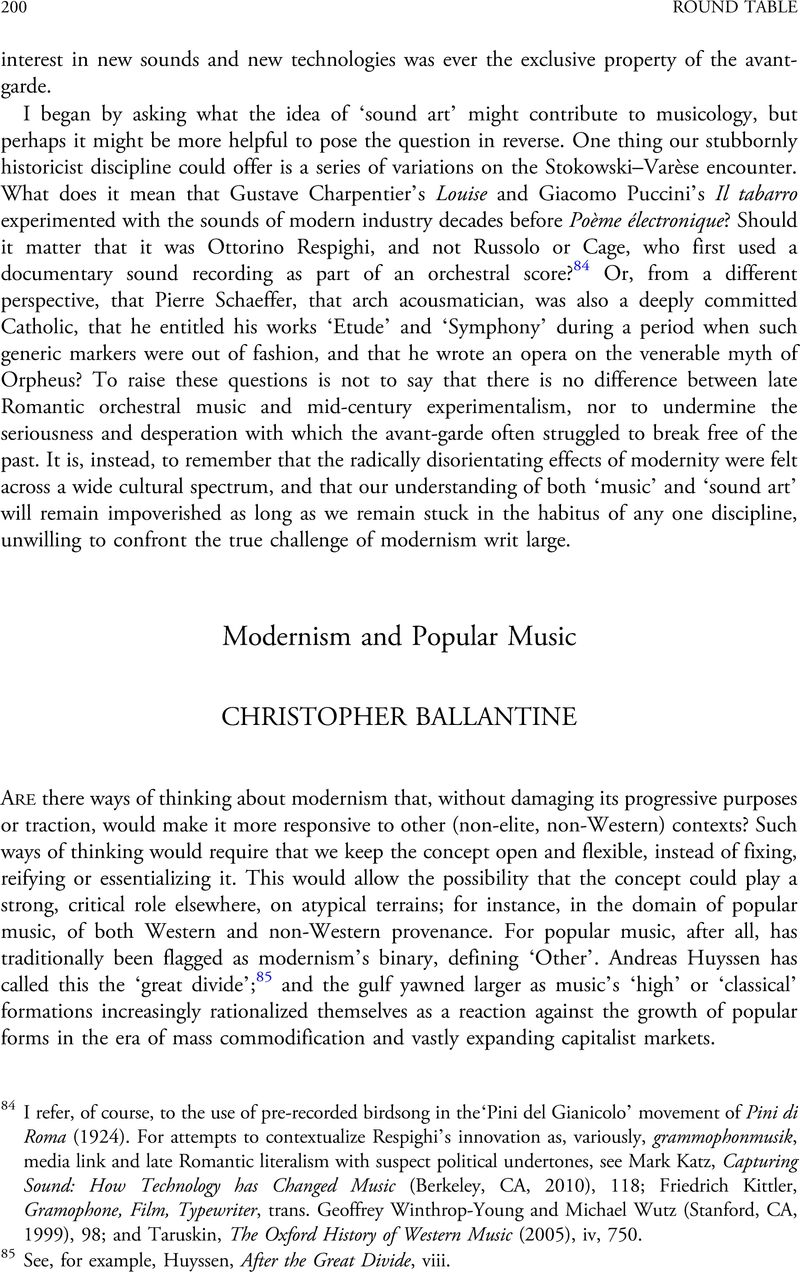Published online by Cambridge University Press: 01 January 2020

85 See, for example, Huyssen, After the Great Divide, viii.
86 Paul Connerton, How Modernity Forgets (Cambridge, 2009), 10, 146, 78.
87 David Harvey, The Condition of Postmodernity: An Enquiry into the Origins of Cultural Change (Oxford, 1990), 20–1.
88 Stanley Cavell, Must We Mean What We Say? (2nd edn, Cambridge, 2002), 206.
89 Cited in Lydia Goehr, ‘Dissonant Works and the Listening Public’, The Cambridge Companion to Adorno, ed. Tom Huhn (Cambridge, 2004), 222–47 (p. 243).
90 George Lipsitz, Footsteps in the Dark: The Hidden Histories of Popular Music (Minneapolis, MN, 2007), 241. See also Guy Debord and Gil J. Wolman, ‘A User's Guide to Détournement’, Les lèvres nues, 8 (1956), Situationist International Online, <http://www.cddc.vt.edu/sionline/presitu/usersguide.html>, accessed 2 January 2014.
91 Motti Regev, Pop-Rock Music: Aesthetic Cosmopolitanism in Late Modernity (Cambridge, 2013), 3.
92 Motti Regev, Pop-Rock Music: Aesthetic Cosmopolitanism in Late Modernity (Cambridge, 2013), 38.
93 Paul Gilroy, Darker than Blue: On the Moral Economies of Black Atlantic Culture (Cambridge, MA, 2010), 127.
94 Paul Gilroy, Darker than Blue: On the Moral Economies of Black Atlantic Culture (Cambridge, MA, 2010), 88.
95 Paul Gilroy, Darker than Blue: On the Moral Economies of Black Atlantic Culture (Cambridge, MA, 2010), 132, 130.
96 Paul Gilroy, Darker than Blue: On the Moral Economies of Black Atlantic Culture (Cambridge, MA, 2010), 134.
97 Simon Reynolds, Energy Flash: A Journey through Rave Music and Dance Culture (London, 1998), 386.
98 Lipsitz, Footsteps in the Dark, 239, 243.
99 Lipsitz, Footsteps in the Dark, 239, 244–5.
100 Clifford Geertz, After the Fact: Two Countries, Four Decades, One Anthropologist (Cambridge, MA, 1995), 114.